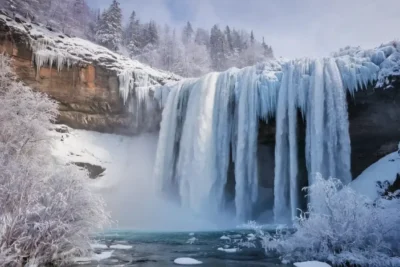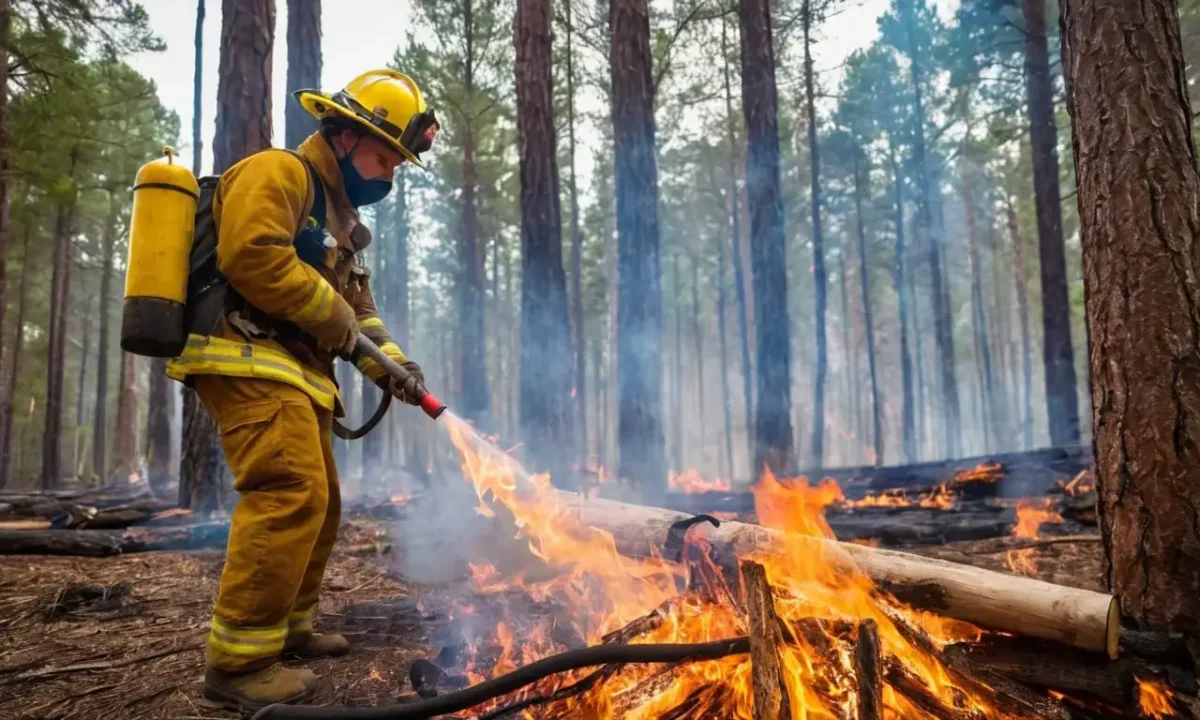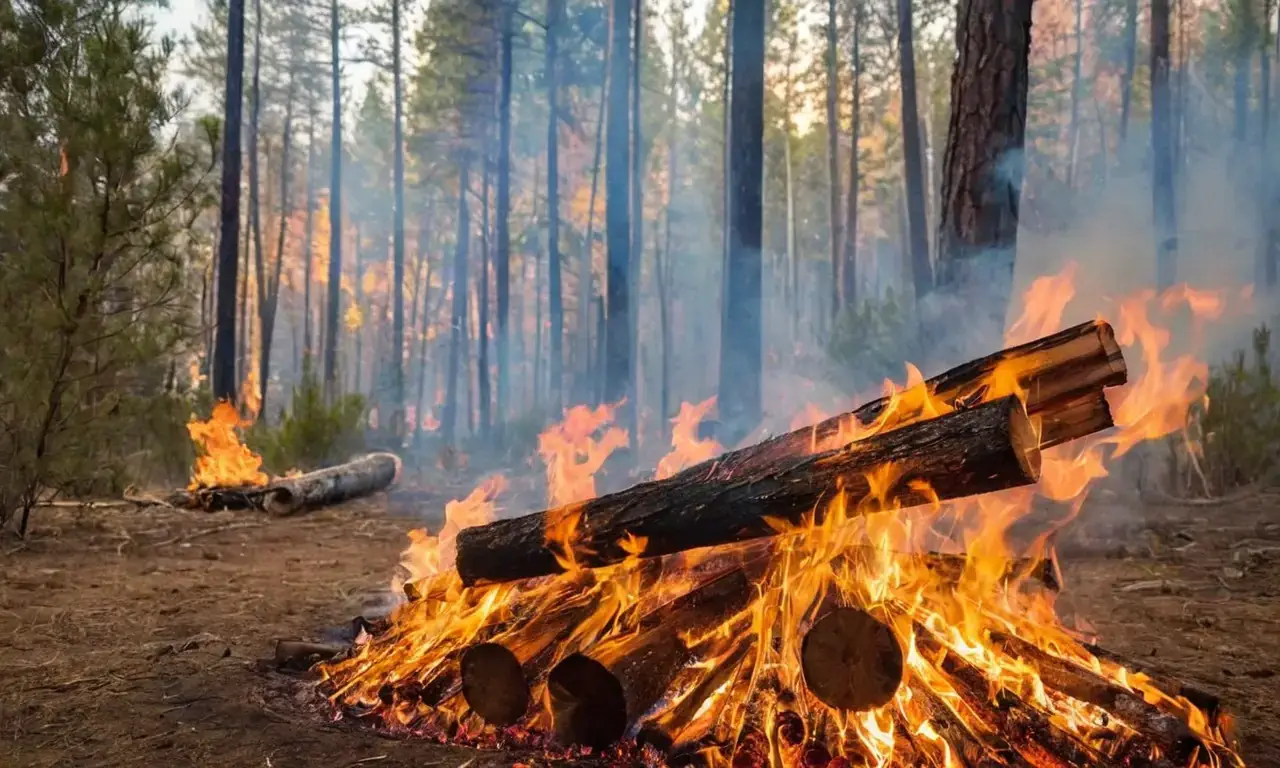
Firefighting: Fighting Fire With Controlled Burns

Firefighting is a multifaceted field that encompasses various techniques and strategies aimed at controlling and extinguishing fires. One of the most intriguing and impactful methods employed in this endeavor is "fighting fire with fire," a concept deeply rooted in both historical practices and modern wildfire management. This phrase, often used metaphorically to describe matching aggression with aggression, holds significant literal meaning in the context of controlled burns. These strategic burns play a crucial role in mitigating wildfire damage by removing fuel loads and creating firebreaks, effectively starving flames of their sustenance.
The article delves into the history and origins of this powerful technique, exploring how it evolved from a metaphorical expression to a vital tool in managing wildfires. We will examine the various benefits of controlled burns for both ecosystem health and firefighting efforts. Additionally, we'll discuss the techniques involved in conducting these burns safely and effectively, highlighting legal regulations and safety protocols that govern their implementation. Furthermore, we'll address ethical considerations and potential environmental concerns associated with controlled burning practices. By examining real-world examples of successful applications, we aim to showcase the tangible impact of this technique on wildfire management. Finally, we will explore the future direction of wildfire management and the continued role of controlled burns in mitigating fire risks.
- The History and Origins of "Fighting Fire With Fire"
- Controlled Burns: A Key Tool in Wildfire Management
- Benefits of Controlled Burns for Ecosystem Health
- Techniques and Considerations for Conducting Controlled Burns
- Legal Regulations and Safety Protocols for Burning
- Ethical Implications and Environmental Concerns
- Case Studies of Successful Controlled Burn Applications
- Conclusion
The History and Origins of "Fighting Fire With Fire"
The phrase "fight fire with fire" has been used for centuries across various cultures to describe strategies involving matching aggression with aggression. In ancient times, warriors would use similar tactics during battles, employing smoke bombs or incendiary weapons to weaken enemy positions. This concept found its way into the realm of firefighting when controlled burns emerged as a practical solution for managing wildfires.
The practice of using fire to control other fires dates back centuries and is deeply rooted in indigenous cultures worldwide. For example, Native American tribes often used controlled burns to clear underbrush and promote healthy forest growth. These practices were not only about controlling wildfires but also about maintaining ecological balance within their territories. In the 19th century, scientific understanding of fire ecology further developed this practice, leading to the development of modern wildfire management techniques.
The term "fighting fire with fire" gained widespread recognition in the early 20th century when controlled burns became a standard tool for managing wildfires. This technique was first employed by firefighters in Australia during the devastating bushfires of the 1930s and has since become an integral part of wildfire management strategies worldwide. The use of fire against fire not only reduces fuel loads but also creates firebreaks, which are areas where flames cannot easily spread.
Controlled Burns: A Key Tool in Wildfire Management
Controlled burns are a crucial component of modern wildfire management practices. These carefully planned and executed burns involve igniting small patches of vegetation to reduce the overall risk of wildfires. By removing fuel loads, controlled burns create firebreaks that act as barriers against the spread of flames. This technique is particularly effective in areas with high wildfire risk, where even minor sparks can ignite large-scale fires.
Controlled burns are conducted under specific conditions and adhere to strict safety protocols. Firefighters carefully select burn sites based on factors such as weather patterns, wind direction, and fuel load. They also consider the potential impact of smoke on air quality and nearby communities. By conducting controlled burns strategically, firefighters can effectively manage wildfire risks while minimizing environmental damage.
The benefits of controlled burns extend beyond wildfire management. These burns play a vital role in restoring ecosystems by promoting plant diversity and nutrient cycling. For example, burning grasslands allows for new growth of grasses and wildflowers, which attracts pollinators and other beneficial wildlife. Controlled burns also help to control invasive species by removing them from the landscape.
Benefits of Controlled Burns for Ecosystem Health
Controlled burns offer numerous ecological benefits that contribute to a healthy ecosystem. One of the most significant advantages is their ability to promote plant diversity. When vegetation is burned, it creates open spaces that allow sunlight to reach the forest floor. This increased sunlight encourages the growth of various species of plants and wildflowers, creating a more diverse and resilient ecosystem.
Controlled burns also play a crucial role in nutrient cycling. As vegetation decomposes after burning, it releases nutrients back into the soil. These nutrients are then available for uptake by new plant growth, contributing to the overall health and productivity of the ecosystem. Additionally, controlled burns can help control invasive species by removing them from the landscape.
In addition to their ecological benefits, controlled burns also contribute to fire suppression efforts. By reducing fuel loads, these burns create firebreaks that make it more difficult for wildfires to spread. This is particularly important in areas with high wildfire risk, where even small sparks can ignite large-scale fires.
Techniques and Considerations for Conducting Controlled Burns

Conducting controlled burns requires careful planning and execution to ensure safety and effectiveness. Firefighters use a variety of techniques to achieve their goals, including ground ignition and aerial ignition. Ground ignition involves igniting the fire directly on the ground using hand tools or specialized equipment. Aerial ignition utilizes aircraft to drop burning materials into designated areas.
Before conducting any controlled burn, firefighters must obtain necessary permits from local authorities. These permits are issued after a thorough assessment of the burn site, including weather conditions and fuel load. Firefighters also consider factors such as wind direction and potential smoke dispersion patterns when planning their burns.
Safety is paramount during controlled burns. Firefighters wear protective gear to minimize exposure to heat and smoke. They also use water tankers to suppress any accidental fires that may occur during the burn operation. Additionally, firefighters monitor the burn site closely for signs of uncontrolled spread. If necessary, they can shut down the burn or adjust their strategy to prevent further damage.
Legal Regulations and Safety Protocols for Burning
Controlled burns are subject to strict legal regulations and safety protocols to ensure responsible fire management practices. These regulations vary from jurisdiction to jurisdiction but generally address aspects such as air quality monitoring, smoke dispersion, and public safety.
For example, the Environmental Protection Agency (EPA) has established guidelines for conducting controlled burns that minimize environmental impact. These guidelines include requirements for pre-burn assessments, smoke dispersion modeling, and post-burn monitoring. Additionally, local fire departments often have their own regulations regarding controlled burns within their jurisdictions.
Safety protocols are also crucial during controlled burns. Firefighters must be trained in proper burn management techniques and equipped with the necessary safety gear to handle potential emergencies. They also need to understand the legal requirements for conducting burns and ensure they comply with all applicable regulations.
Ethical Implications and Environmental Concerns
Controlled burns raise several ethical and environmental concerns that require careful consideration. One of the main concerns is the potential impact on air quality. Smoke from controlled burns can travel long distances, potentially affecting nearby communities and contributing to respiratory problems. To mitigate these effects, fire managers often implement smoke management strategies such as burning during favorable weather conditions or using water tankers to suppress smoke plumes.
Another ethical concern is the potential for unintended consequences. For example, if a controlled burn escapes containment, it could spread rapidly and cause significant damage. Therefore, firefighters must exercise extreme caution when conducting burns and ensure they have adequate resources available to manage any unforeseen events. Additionally, fire managers need to consider the long-term ecological impacts of their actions before initiating a burn operation.
Case Studies of Successful Controlled Burn Applications
Controlled burns have been successfully implemented in various regions around the world, demonstrating their effectiveness in managing wildfires and promoting ecosystem health. One notable example is the use of controlled burns in Australia's Great Barrier Reef region. These burns help to control invasive species and maintain the delicate balance of this unique ecosystem.
Another successful application involves the use of controlled burns for forest management in North America. Forest managers often conduct these burns to reduce fuel loads, creating firebreaks that can help prevent wildfires from spreading. By strategically burning areas of dense vegetation, they create a mosaic of burned and unburned patches that promotes biodiversity and resilience within the forest ecosystem.
These examples highlight the wide range of applications for controlled burns in managing ecosystems and mitigating wildfire risks. As climate change continues to pose challenges to fire management practices, controlled burns will likely play an even more important role in protecting our natural resources.
Conclusion
Controlled burns are a valuable tool for managing wildfires and promoting ecosystem health. By carefully planning and executing these burns, firefighters can minimize environmental impact while achieving their goals of reducing wildfire risk and restoring damaged landscapes. As we face increasing challenges from climate change and the growing threat of wildfires, controlled burns will continue to play a vital role in protecting our natural resources and ensuring a sustainable future for generations to come.
Leave a Reply





Related Links